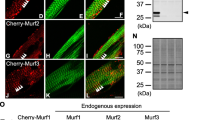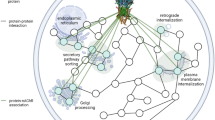Abstract
Myogenic precursor cells express connexins (Cx) and pannexins (Panx), proteins that form different membrane channels involved in cell-cell communication. Cx channels connect either the cytoplasm of adjacent cells, called gap junction channels (GJC), or link the cytoplasm with the extracellular space, termed hemichannels (HC), while Panx channels only support the latter. In myoblasts, Panx1 HCs play a critical role in myogenic differentiation, and Cx GJCs and possibly Cx HCs coordinate metabolic responses during later steps of myogenesis. After innervation, myofibers do not express Cxs, but still express Panx1. In myotubes and innervated myofibers, Panx1 HCs allow release of adenosine triphosphate and thus they might be involved in skeletal muscle plasticity. In addition, Panx1 HCs present in adult myofibers mediate adenosine triphosphate release and glucose uptake required for potentiation of muscle contraction. Under pathological conditions, such as upon denervation and spinal cord injury, levels of Panx1 are upregulated. However, Panx1−/− mice show similar degree of atrophy as denervated wild-type muscles. Skeletal muscles also express Cx HCs in the sarcolemma after denervation or spinal cord injury, plus other non-selective membrane channels, including purinergic P2X7 receptors and transient receptor potential type V2 channels. The absence of Cx43 and Cx45 is sufficient to drastically reduce denervation atrophy. Moreover, inflammatory cytokines also induce the expression of Cxs in myofibers, suggesting the expression of these Cxs as a common factor for myofiber degeneration under diverse pathological conditions. Inhibitors of skeletal muscle Cx HCs could be promising tools to prevent muscle wasting induced by conditions associated with synaptic dysfunction and inflammation.


Similar content being viewed by others
Abbreviations
- ADP:
-
Adenosine diphosphate
- ATP:
-
Adenosine triphosphate
- Cx:
-
Connexin
- GJC:
-
Gap junction channel
- HC:
-
Hemichannel
- P2R:
-
Purinergic P2 receptor
- Panx:
-
Pannexin
References
Charge SB, Rudnicki MA (2004) Cellular and molecular regulation of muscle regeneration. Physiol Rev 84(1):209–238. doi:10.1152/physrev.00019.2003
Friday BB, Pavlath GK (2001) A calcineurin- and NFAT-dependent pathway regulates Myf5 gene expression in skeletal muscle reserve cells. J Cell Sci 114(Pt 2):303–310
Araya R, Riquelme MA, Brandan E, Saez JC (2004) The formation of skeletal muscle myotubes requires functional membrane receptors activated by extracellular ATP. Brain Res Brain Res Rev 47(1–3):174–188. doi:10.1016/j.brainresrev.2004.06.003
Casas M, Buvinic S, Jaimovich E (2014) ATP signaling in skeletal muscle: from fiber plasticity to regulation of metabolism. Exerc Sport Sci Rev 42(3):110–116. doi:10.1249/JES.0000000000000017
Cea LA, Riquelme MA, Cisterna BA, Puebla C, Vega JL, Rovegno M, Saez JC (2012) Connexin- and pannexin-based channels in normal skeletal muscles and their possible role in muscle atrophy. J Membr Biol 245(8):423–436. doi:10.1007/s00232-012-9485-8
Cisterna BA, Cardozo C, Saez JC (2014) Neuronal involvement in muscular atrophy. Front Cell Neurosci 8:405. doi:10.3389/fncel.2014.00405
Darbellay B, Arnaudeau S, Ceroni D, Bader CR, Konig S, Bernheim L (2010) Human muscle economy myoblast differentiation and excitation-contraction coupling use the same molecular partners, STIM1 and STIM2. J Biol Chem 285(29):22437–22447. doi:10.1074/jbc.M110.118984
Darbellay B, Arnaudeau S, Konig S, Jousset H, Bader C, Demaurex N, Bernheim L (2009) STIM1- and Orai1-dependent store-operated calcium entry regulates human myoblast differentiation. J Biol Chem 284(8):5370–5380. doi:10.1074/jbc.M806726200
Antigny F, Konig S, Bernheim L, Frieden M (2014) Inositol 1,4,5 trisphosphate receptor 1 is a key player of human myoblast differentiation. Cell Calcium 56(6):513–521. doi:10.1016/j.ceca.2014.10.014
Ryten M, Dunn PM, Neary JT, Burnstock G (2002) ATP regulates the differentiation of mammalian skeletal muscle by activation of a P2X5 receptor on satellite cells. J Cell Biol 158(2):345–355. doi:10.1083/jcb.200202025
Pelegrin P, Surprenant A (2006) Pannexin-1 mediates large pore formation and interleukin-1beta release by the ATP-gated P2X7 receptor. EMBO J 25(21):5071–5082. doi:10.1038/sj.emboj.7601378
Bhaskaracharya A, Dao-Ung P, Jalilian I, Spildrejorde M, Skarratt KK, Fuller SJ, Sluyter R, Stokes L (2014) Probenecid blocks human P2X7 receptor-induced dye uptake via a pannexin-1 independent mechanism. PLoS One 9(3):e93058. doi:10.1371/journal.pone.0093058
Locovei S, Wang J, Dahl G (2006) Activation of pannexin 1 channels by ATP through P2Y receptors and by cytoplasmic calcium. FEBS Lett 580(1):239–244. doi:10.1016/j.febslet.2005.12.004
Ambrosi C, Gassmann O, Pranskevich JN, Boassa D, Smock A, Wang J, Dahl G, Steinem C, Sosinsky GE (2010) Pannexin1 and Pannexin2 channels show quaternary similarities to connexons and different oligomerization numbers from each other. J Biol Chem 285(32):24420–24431. doi:10.1074/jbc.M110.115444
Bruzzone R, Barbe MT, Jakob NJ, Monyer H (2005) Pharmacological properties of homomeric and heteromeric pannexin hemichannels expressed in Xenopus oocytes. J Neurochem 92(5):1033–1043. doi:10.1111/j.1471-4159.2004.02947.x
Baranova A, Ivanov D, Petrash N, Pestova A, Skoblov M, Kelmanson I, Shagin D, Nazarenko S, Geraymovych E, Litvin O, Tiunova A, Born TL, Usman N, Staroverov D, Lukyanov S, Panchin Y (2004) The mammalian pannexin family is homologous to the invertebrate innexin gap junction proteins. Genomics 83(4):706–716. doi:10.1016/j.ygeno.2003.09.025
Shoji KF, Saez PJ, Harcha PA, Aguila HL, Saez JC (2014) Pannexin1 channels act downstream of P2X 7 receptors in ATP-induced murine T-cell death. Channels 8(2):142–156. doi:10.4161/chan.28122
Sosinsky GE, Boassa D, Dermietzel R, Duffy HS, Laird DW, MacVicar B, Naus CC, Penuela S, Scemes E, Spray DC, Thompson RJ, Zhao HB, Dahl G (2011) Pannexin channels are not gap junction hemichannels. Channels 5(3):193–197
Bruzzone R, Hormuzdi SG, Barbe MT, Herb A, Monyer H (2003) Pannexins, a family of gap junction proteins expressed in brain. Proc Natl Acad Sci USA 100(23):13644–13649. doi:10.1073/pnas.2233464100
Sahu G, Sukumaran S, Bera AK (2014) Pannexins form gap junctions with electrophysiological and pharmacological properties distinct from connexins. Scientific reports 4:4955. doi:10.1038/srep04955
Locovei S, Bao L, Dahl G (2006) Pannexin 1 in erythrocytes: function without a gap. Proc Natl Acad Sci USA 103(20):7655–7659. doi:10.1073/pnas.0601037103
Riquelme MA, Cea LA, Vega JL, Boric MP, Monyer H, Bennett MV, Frank M, Willecke K, Saez JC (2013) The ATP required for potentiation of skeletal muscle contraction is released via pannexin hemichannels. Neuropharmacology 75:594–603. doi:10.1016/j.neuropharm.2013.03.022
Romanov RA, Bystrova MF, Rogachevskaya OA, Sadovnikov VB, Shestopalov VI, Kolesnikov SS (2012) The ATP permeability of pannexin 1 channels in a heterologous system and in mammalian taste cells is dispensable. J Cell Sci 125(Pt 22):5514–5523. doi:10.1242/jcs.111062
Schalper KA, Palacios-Prado N, Orellana JA, Saez JC (2008) Currently used methods for identification and characterization of hemichannels. Cell Commun Adhes 15(1):207–218. doi:10.1080/15419060802014198
Proulx AA, Lin ZX, Naus CC (1997) Transfection of rhabdomyosarcoma cells with connexin43 induces myogenic differentiation. Cell Growth Differ 8(5):533–540
Riquelme MA, Cea LA, Vega JL, Puebla C, Vargas AA, Shoji KF, Subiabre MJCS (2015) Pannexin channels mediate the acquisition of myogenic commitment in C2C12 reserve cells promoted by P2 receptor activation. Front Cell Dev Biol 3(25):1–11. doi:10.3389/fcell.2015.00025
Langlois S, Xiang X, Young K, Cowan BJ, Penuela S, Cowan KN (2014) Pannexin 1 and pannexin 3 channels regulate skeletal muscle myoblast proliferation and differentiation. J Biol Chem 289(44):30717–30731. doi:10.1074/jbc.M114.572131
Buvinic S, Almarza G, Bustamante M, Casas M, Lopez J, Riquelme M, Saez JC, Huidobro-Toro JP, Jaimovich E (2009) ATP released by electrical stimuli elicits calcium transients and gene expression in skeletal muscle. J Biol Chem 284(50):34490–34505. doi:10.1074/jbc.M109.057315
Saez JC, Leybaert L (2014) Hunting for connexin hemichannels. FEBS Lett 588(8):1205–1211. doi:10.1016/j.febslet.2014.03.004
Duxson MJ, Usson Y, Harris AJ (1989) The origin of secondary myotubes in mammalian skeletal muscles: ultrastructural studies. Development 107(4):743–750
Kalderon N, Epstein ML, Gilula NB (1977) Cell-to-cell communication and myogenesis. Journal Cell Biol 75(3):788–806
Rash JE, Staehelin LA (1974) Freeze-cleave demonstration of gap junctions between skeletal myogenic cells in vivo. Dev Biol 36(2):455–461
Schmalbruch H (1982) Skeletal muscle fibers of newborn rats are coupled by gap junctions. Dev Biol 91(2):485–490
Balogh S, Naus CC, Merrifield PA (1993) Expression of gap junctions in cultured rat L6 cells during myogenesis. Dev Biol 155(2):351–360. doi:10.1006/dbio.1993.1034
Constantin B, Cronier L (2000) Involvement of gap junctional communication in myogenesis. Int Rev Cytol 196:1–65
Dahl E, Winterhager E, Traub O, Willecke K (1995) Expression of gap junction genes, connexin40 and connexin43, during fetal mouse development. Anat Embryol (Berl) 191(3):267–278
Araya R, Eckardt D, Maxeiner S, Kruger O, Theis M, Willecke K, Saez JC (2005) Expression of connexins during differentiation and regeneration of skeletal muscle: functional relevance of connexin43. J Cell Sci 118(Pt 1):27–37. doi:10.1242/jcs.01553
Araya R, Eckardt D, Riquelme MA, Willecke K, Saez JC (2003) Presence and importance of connexin43 during myogenesis. Cell Commun Adhes 10(4–6):451–456
von Maltzahn J, Euwens C, Willecke K, Sohl G (2004) The novel mouse connexin39 gene is expressed in developing striated muscle fibers. J Cell Sci 117(Pt 22):5381–5392. doi:10.1242/jcs.01413
von Maltzahn J, Wulf V, Matern G, Willecke K (2011) Connexin39 deficient mice display accelerated myogenesis and regeneration of skeletal muscle. Exp Cell Res 317(8):1169–1178. doi:10.1016/j.yexcr.2011.01.017
von Maltzahn J, Wulf V, Willecke K (2006) Spatiotemporal expression of connexin 39 and -43 during myoblast differentiation in cultured cells and in the mouse embryo. Cell Commun Adhes 13(1–2):55–60. doi:10.1080/15419060600631508
Zhou JZ, Jiang JX (2014) Gap junction and hemichannel-independent actions of connexins on cell and tissue functions—an update. FEBS Lett 588(8):1186–1192. doi:10.1016/j.febslet.2014.01.001
Cea LA, Cisterna BA, Puebla C, Frank M, Figueroa XF, Cardozo C, Willecke K, Latorre R, Saez JC (2013) De novo expression of connexin hemichannels in denervated fast skeletal muscles leads to atrophy. Proc Natl Acad Sci USA 110(40):16229–16234. doi:10.1073/pnas.1312331110
Hirata H, Wen H, Kawakami Y, Naganawa Y, Ogino K, Yamada K, Saint-Amant L, Low SE, Cui WW, Zhou W, Sprague SM, Asakawa K, Muto A, Kawakami K, Kuwada JY (2012) Connexin 39.9 protein is necessary for coordinated activation of slow-twitch muscle and normal behavior in zebrafish. J Biol Chem 287(2):1080–1089. doi:10.1074/jbc.M111.308205
Jorquera G, Altamirano F, Contreras-Ferrat A, Almarza G, Buvinic S, Jacquemond V, Jaimovich E, Casas M (2013) Cav11 controls frequency-dependent events regulating adult skeletal muscle plasticity. J Cell Sci 126(5):1189–1198. doi:10.1242/jcs.116855
Cea LA, Riquelme MA, Vargas AA, Urrutia C, Saez JC (2014) Pannexin 1 channels in skeletal muscles. Front Physiol 5:139. doi:10.3389/fphys.2014.00139
Pillon NJ, Li YE, Fink LN, Brozinick JT, Nikolayev A, Kuo MS, Bilan PJ, Klip A (2014) Nucleotides released from palmitate-challenged muscle cells through pannexin-3 attract monocytes. Diabetes 63(11):3815–3826. doi:10.2337/db14-0150
Acknowledgments
This work was partially funded by FONDECYT grants 1150291 (to Juan C. Sáez), ICM-Economía P09-022-F Centro Interdisciplinario de Neurociencias de Valparaíso (to Juan C. Sáez) and the Department of Veterans Affairs Rehabilitation Research and Development Service (B9212C) and the James J. Peters VA Medical Center. Bruno A. Cisterna and Anibal Vargas acknowledge the support of a CONICYT fellowship.
Conflict of interest
The authors declare that the research was conducted in the absence of any commercial or financial relationship that could be construed as a potential conflict of interest.
Author information
Authors and Affiliations
Corresponding author
Rights and permissions
About this article
Cite this article
Sáez, J.C., Cisterna, B.A., Vargas, A. et al. Regulation of pannexin and connexin channels and their functional role in skeletal muscles. Cell. Mol. Life Sci. 72, 2929–2935 (2015). https://doi.org/10.1007/s00018-015-1968-1
Received:
Accepted:
Published:
Issue Date:
DOI: https://doi.org/10.1007/s00018-015-1968-1




